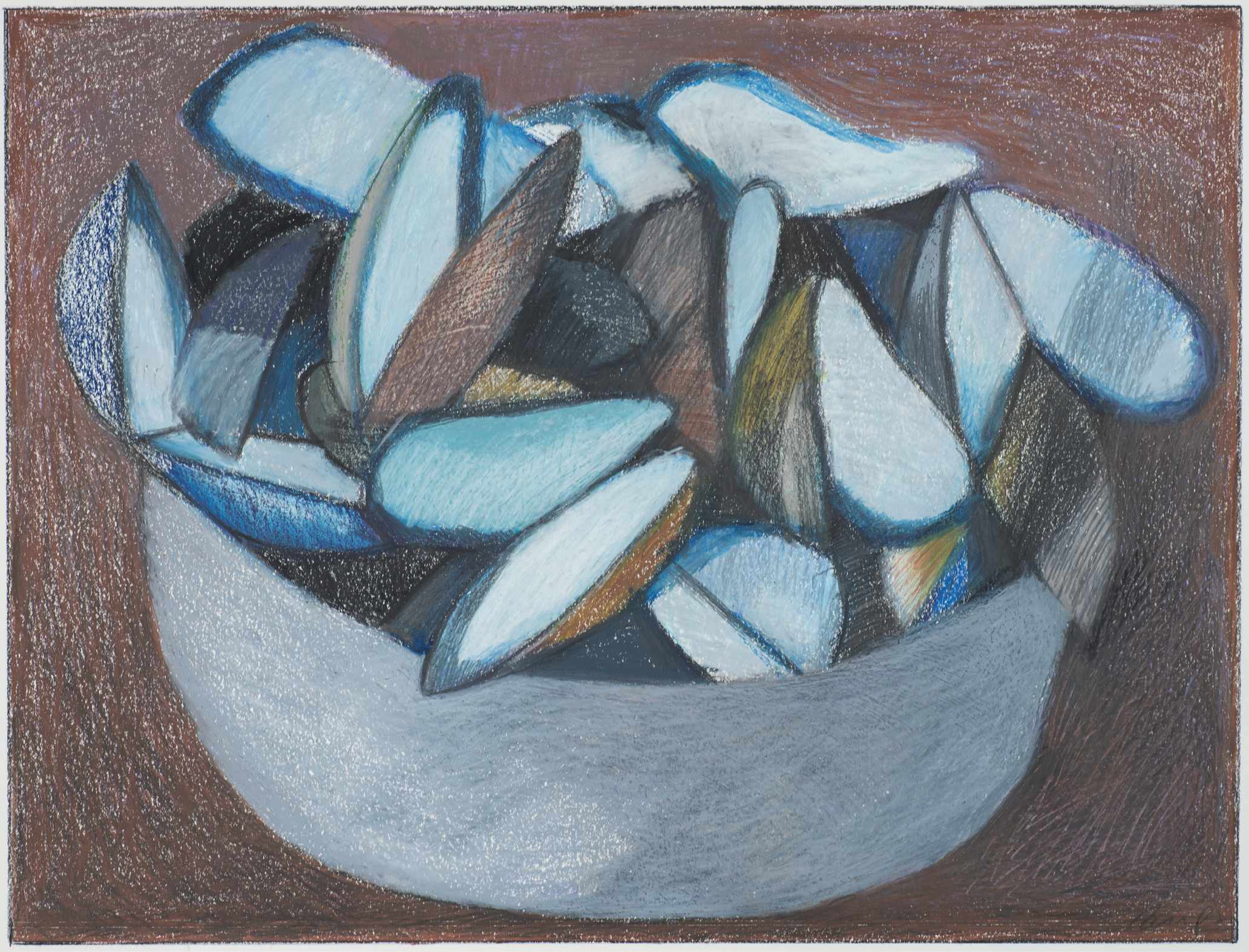
07 Jan Perspective: Fostering an Energy
Post-war American artist Paul Harris [1925 – 2018] decided to become a sculptor while attending the University of New Mexico in 1948, where he studied with Agnes Martin. After that, a summer working under Hans Hofmann became crucial to his creative development. Primarily a sculptor, Harris’ female cloth figures put him on the map in New York City’s vibrant Abstract Expressionist scene in the 1950s, with his first solo show taking place at the Poindexter Gallery.
“My dad considered himself more of a sculptor than a painter,” says Nicholas Harris, the artist’s son and a Bozeman, Montana-based architect. “His identity was really based on sculpture. Fabric and bronze were the two essential expressions of his work.”
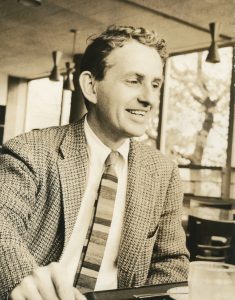
Artist Paul Harris worked in a variety of media, but is best known for his life-sized upholstered female figures.
Harris’ fabric sculptures incorporate color composition, voicing a young artist’s concerns with the figure amid abstraction. They often meld the human form with pieces of furniture, offering a courageous emotional tether to being in the moment. In contrast, his bronze sculptures represent a mature artist with a seasoned mind, an artist wrestling with more complex questions within a larger context.
Over more than 60 years of art-making and teaching, Harris embraced an interdisciplinary artistic practice, leaving behind an extraordinary legacy. He found meaning and purpose in the shape of bronze, the visceral feeling of string, the strength of color, and the delightful incongruity of his sewn figures. As Harris wrote, “Sculpture must engage, arouse, disturb, irritate some tiny particle within us that nothing else touches.”
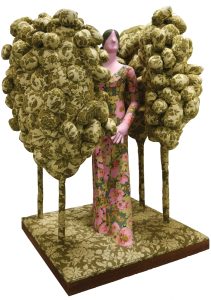
Norissa Rushing | Cloth and Wood on Metal | 85 x 72 x 60 inches | 1972
His bronze works ring with texture. Made first in wax, every piece retains evidence of the maker’s hand, from a cup and saucer to an abstracted flower vase to the larger figurative pieces that resonate more like a presence than an object.
“Sometimes it feels like he’s reaching into the subconscious more with the bronzes than what he does in his prints and drawings,” Nicholas says. “The bronzes became an exploration of his intuitive world. In many of the pieces, he is capturing the ordinary where at times he brings a sexuality to them; and at other times he gets us to see a deeper meaning in these everyday objects, asking us to pause and reflect for a minute.”
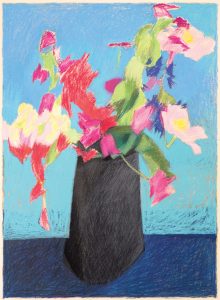
Black Vase Crayon on Paper | 21.5 x 15.5 inches | 1984
One of his larger-than-life bronzes, Woman on the Beach, a partial figure with high, tented legs, will be installed this spring at the Bozeman Sculpture Park in Montana. “That is a strong piece precisely because it represents both the younger artist mourning the loss of his mother and the older artist who comes to this piece in a more complex way,” Nicholas says, referring to the artist’s loss of his mother at a very early age. “It’s a memory of his mother on the beach, walking under her legs as if it was a bridge.” As Harris’ largest bronze, Woman on the Beach will be placed along a pathway where people can experience an intimate connection with it.
Harris’ works on paper remain in continuous dialogue with his sculptures, bringing patterns and textures into a two-dimensional relationship. A direct conversation with the theories of Hans Hofmann, Harris’ activated surface carries an almost electric energy to the compositions. He used art crayons, which offered him an immediacy that reached back to his childhood. “I remember in sixth grade the teacher wanted a lot of things made that she would use the next year and the next,” Harris said in a KWMR radio interview conducted in the 2000s. “I didn’t do much work in her class except make these big drawings. I became very accustomed to crayons, and I’ve never been able to let them go. Crayons are still my best friends in making drawings, and I don’t think it will ever end. The [ones I use] are a bit better than school crayons but not much.”
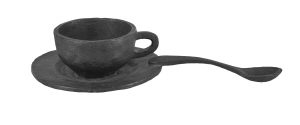
Cup, Saucer, and Spoon | Bronze | 3 x 12 x 6.5 inches | 1974
In his piece Black Vase, the flowers themselves are not an exact copy; instead, it expresses not only the idea of flowers, of sweet peas and perhaps columbine, but the joy of beholding something fragrant and exquisite. Looking a bit closer, Harris created layers through the vitality of his colors. For this, we can refer to Hofmann’s idea of an activated surface. Harris once said of Hofmann’s influence that he wanted the subject of the drawing to shatter the background. In Black Vase, jagged petals jab at the shifting blue behind them, and the table’s shadow disappears into the background.
Harris’ wax and pigment pieces are full of movement; his crayon work, frantic, methodical, intensely zig-zagging along the surface. As stated in the laws of thermodynamics, energy cannot be destroyed but is converted from one source to another. The energy Harris bestowed on the drawing is still there — conveyed forever on the surface, on the picture plane.
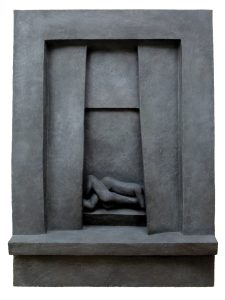
Early One Morning | Bronze | 47 x 35 x 5 inches | 1989
Harris earned his bachelor’s degree and a Master of Fine Arts from the University of New Mexico, and his doctorate from Columbia University. A Fulbright professor in Chile, a MacDowell Colony resident, a Guggenheim recipient, and a visiting artist at the Rinehart School of Sculpture, Harris also exhibited his work in major museums across the country, including the Smithsonian Institution, the Los Angeles County Museum of Art, the Museum of Contemporary Crafts, the 1965 New York World’s Fair, the Art Institute of Chicago, and the Museum of Modern Art. He taught at many of the most prestigious art schools, eventually landing at the California College of the Arts in Oakland, where he retired in 1992.
Although Harris was considered part of the Bay Area Figurative Movement, as noted in Thomas Albright’s Art in the San Francisco Bay Area, 1945 – 1980: An Illustrated History, the Harris family has a strong connection to Montana and frequently visited the region. In fact, Harris taught sculpture at Montana State University and worked in a one-room schoolhouse just south of Bozeman. The artist died in Bozeman in 2018.
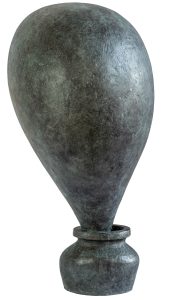
Bouquet | Bronze | 35 x 21 x 23 inches | 1968
“It was a landscape that Dad was really connected with,” Nicholas says. “He resonated with the mountains. My mother [Marguerite Kirk] grew up in Bozeman. Her parents and aunt were well-established in the community going back to my mother’s great-grandfather who homesteaded in Bozeman in the 1880s.”
In addition, the Paul Harris Art Collection is housed just outside of Bozeman in Belgrade, with a gallery that regularly showcases Harris’ work, often combining it with other historical and contemporary artists.
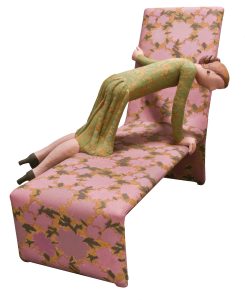
Eleanor Looking | Stuffed Cloth on Aluminum Frame | 50 x 49 x 78 inches | 1973
His work, taken as a whole, reaches outward and pulls inward as he courageously pokes against the thin skin that separates art and artist, challenging the notion of limits. By embracing the incongruities of flatness and three-dimensionality of line and form, context and content, Harris’ work invites the viewer to consider what it means to be vulnerable.






No Comments